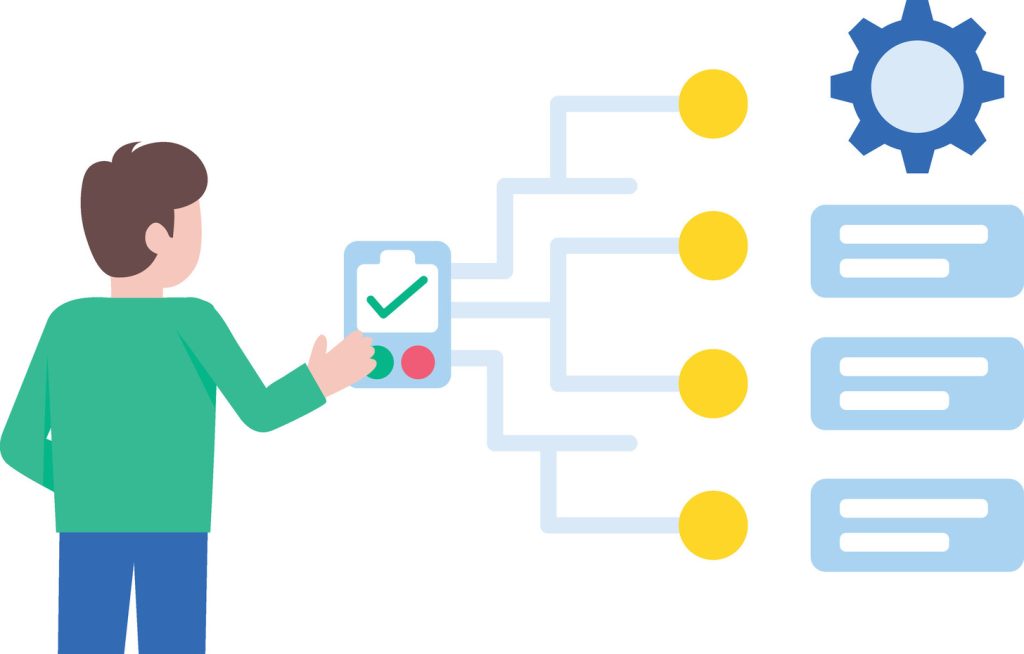How to Implement AI Auto-Reply to Support Tickets Effectively

Modern businesses struggle with rising customer expectations for instant resolutions. As query volumes surge across email, chat, and social media, teams need scalable solutions that maintain service quality. Intelligent response technology offers a strategic approach to this challenge, combining advanced language processing with customizable workflows.
These systems analyze incoming messages using sophisticated filters to prioritize actionable requests. By automatically handling routine inquiries like order confirmations or password resets, they free human agents for complex issues. The most advanced platforms support 24 languages – from Spanish and French to Japanese and Arabic – making them ideal for global organizations.
Successful implementation starts with understanding operational needs. Teams should audit their current help desk processes and identify repetitive tasks suitable for automation. A phased rollout with clear escalation protocols ensures customers receive accurate resolutions while reducing response times by up to 68% in early adopters.
Platforms designed for CRM automation strategies often integrate seamlessly with existing tools. Administrators can set daily response limits and customize templates to align with brand voice. Performance dashboards then track metrics like resolution rates and customer satisfaction scores, enabling continuous optimization.
Key Takeaways
- Intelligent response systems reduce agent workload by automating repetitive customer interactions
- Multilingual capabilities enable consistent service across global markets
- Implementation requires alignment between technical features and operational workflows
- Performance tracking ensures maintained service quality during scaling
- Integration with CRM platforms creates unified customer management ecosystems
Understanding the Role of AI in Customer Support

Immediate engagement now defines successful customer relationships. Organizations using smart response tools see 43% faster acknowledgment times compared to manual processes. This technology acts as a first-response layer, sorting inquiries while preserving human oversight for nuanced cases.
Why Speed and Precision Drive Satisfaction
Automated systems address three critical service gaps:
- 24/7 availability – No delayed replies during nights or holidays
- Error reduction – Pre-approved templates ensure accurate information
- Priority routing – Urgent cases escalate automatically
Dual Advantages for Organizations and Clients
Teams regain 12-15 hours weekly by letting technology handle common requests like order updates or password resets. Customers benefit through:
- Instant ticket confirmation with case numbers
- Personalized answers referencing past interactions
- Self-service options in 92% of non-critical scenarios
One telecom provider reduced average response time from 14 hours to 22 minutes using these methods. Their customer satisfaction scores jumped 31% within six months, proving the strategic value of balanced automation.
Overview of AI Auto-Reply Technology for Support Tickets
Advanced email processing solutions offer a new paradigm in handling customer requests. These systems combine linguistic analysis with operational efficiency, transforming how organizations manage high-volume communications.
Core Features of the Email AI Agent
Sophisticated language processing examines incoming messages, separating urgent queries from non-critical items like newsletters. Detection capabilities identify the sender’s preferred language automatically, regardless of account settings – critical for global teams managing multilingual interactions.
Integrated knowledge bases ensure responses reference verified articles and company-approved content. Confidence scoring evaluates solution relevance before generating replies, maintaining accuracy across diverse queries. Formatted answers use brand-aligned styling with clear headings and bullet points for professional presentation.
Continuous improvement occurs through embedded feedback widgets measuring customer satisfaction. Automated resolution occurs only when responses receive positive ratings, preserving human oversight for complex cases. This balanced approach reduces manual work while ensuring quality standards.
Key operational benefits include:
- Real-time sorting of 150+ daily emails by priority level
- Multilingual response generation in 24 global languages
- Seamless integration with existing knowledge management platforms
Implementing “AI auto-reply to support tickets” for Enhanced Efficiency
Operational excellence in customer service hinges on precise system configurations. Teams achieve peak efficiency by aligning technical capabilities with organizational workflows through strategic setup processes.
Setting Up Trigger Rules and Language Configuration
Effective systems activate only when predefined conditions match incoming requests. Configuration involves:
- Behavior-based triggers using purchase history or inquiry type
- Multilingual alignment with regional dialects and cultural nuances
- Escalation protocols for complex cases requiring human oversight
One logistics company reduced misrouted queries by 79% after implementing geographic language preferences. Their system now routes Spanish-speaking clients to appropriate agents within 12 seconds.
Customizing Templates for Accurate Responses
Brand consistency remains critical when scaling operations. Successful teams:
- Embed dynamic placeholders for personalized client data
- Maintain uniform tone across all communication channels
- Implement version control for template updates
A SaaS provider increased resolution accuracy to 94% by refining response templates quarterly. Their standardized formats decreased follow-up emails by 41% while improving customer satisfaction metrics.
Daily response caps prevent system overload during peak periods. Teams use phased rollouts to test configurations, ensuring seamless integration with existing help desk platforms before full deployment.
Use Cases and Real-World Implementation Examples

Practical applications prove the value of intelligent response systems in diverse business environments. Organizations achieve measurable improvements by aligning automated solutions with specific operational needs.
E-Commerce Order Management
In the retail industry, retailers handling 500+ daily customer queries use automated systems to manage returns and refunds. For instance, when a shopper emails about a wrong item, the system detects keywords like “exchange” or “defective.” As a result, it instantly sends a branded response with return labels and policy links.
A fashion retailer reduced refund processing time by 58% using this method. Their experience scores improved as customers received clear timelines for resolution.
SaaS Technical Support Applications
Software companies automate responses for recurring technical issues like login errors or API failures. Systems reference troubleshooting guides from integrated knowledge bases, providing step-by-step fixes within minutes.
One cybersecurity firm resolved 83% of tier-1 query types without human involvement. Agents now focus on critical vulnerabilities requiring expert analysis.
| Use Case | Key Triggers | Results |
|---|---|---|
| Order Management | Return requests, refund claims | 41% faster resolution |
| Technical Support | Error codes, billing questions | 79% self-service success |
Successful implementations share three traits: comprehensive knowledge bases, precise trigger rules, and exception handling for sensitive cases. Teams maintain quality while scaling operations through strategic automations.
Optimizing and Monitoring AI-Driven Support Performance
Maintaining peak performance requires ongoing refinement after initial deployment. Teams achieve this through granular controls, data-driven adjustments, and closed-loop feedback systems that evolve with changing customer needs.
Advanced Settings and Daily Ticket Limits
To optimize performance, precision controls let organizations balance efficiency with quality. Moreover, administrators set daily response caps per agent, preventing system overload during high-volume periods. Consequently, escalation protocols automatically route complex cases to human agents when confidence scores drop below 85%.
Safety measures like fraud detection algorithms screen for suspicious patterns. Session management tools allocate resources based on priority levels, ensuring urgent requests receive immediate attention.
Analytics & Reporting Insights
Real-time dashboards track seven core metrics across three categories:
| Operational Efficiency | Quality Assurance | Resource Allocation |
|---|---|---|
| Ticket deflection rates | Response accuracy | Session consumption |
| First response time | Customer ratings | Agent workload balance |
These insights help teams identify bottlenecks in help desk workflows. One financial services provider reduced resolution time by 39% after analyzing peak-hour metrics.
Continuous Improvement Strategies

Embedded rating widgets collect direct feedback after each interaction. Teams review escalated cases weekly to update knowledge bases and refine response plans.
Automated content validation checks ensure all replies meet brand guidelines. Quarterly template audits maintain consistency while incorporating new product details or policy changes.
This cyclical approach keeps systems aligned with shifting customer expectations. Organizations using these methods report 22% higher customer satisfaction scores year-over-year.
Conclusion
Intelligent response systems redefine customer service landscapes through measurable operational enhancements. Organizations adopting these solutions see email query resolution times cut by half while maintaining brand-aligned communication. Strategic implementation creates dual value – teams focus on complex cases, while customers receive instant, accurate replies.
Forward-thinking companies report 40% gains in service efficiency after integrating automated solutions. These platforms evolve continuously, with upcoming features like predictive issue resolution and cultural language adaptations. Investments in such automation yield 3:1 ROI through reduced staffing costs and expanded ticket capacity.
Business leaders should audit their help desk workflows to identify automation-ready processes. Prioritizing high-impact areas like order management or technical queries delivers quick wins. Regular template updates and performance reviews ensure systems adapt to changing customer expectations.
The future of customer engagement lies in balancing technological capabilities with human expertise. Companies mastering this blend achieve sustained growth through superior experience metrics and operational agility.

